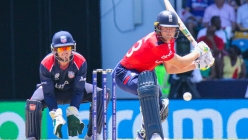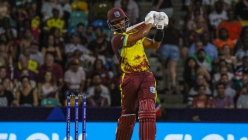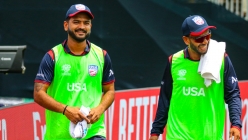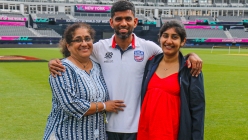Views
USA Cricket: 2019 WCL Division 2 Report Card Part 3 – Outlook for CWC League 2
2019 May 04 by DreamCricket USA
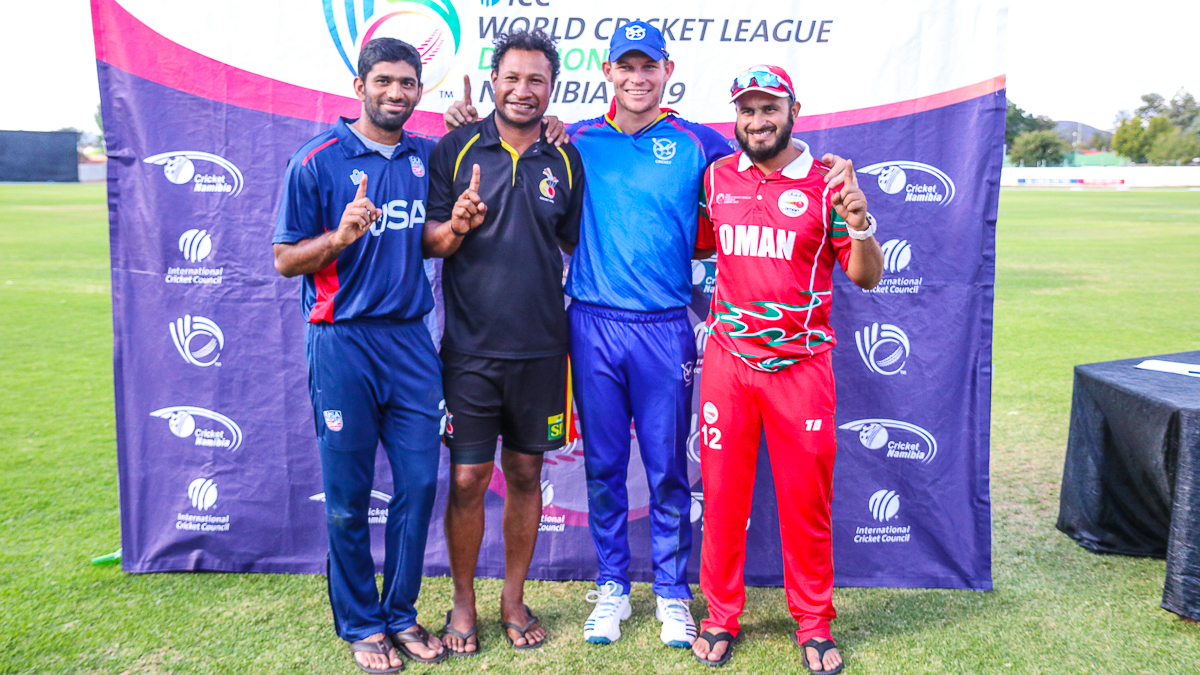
By Peter Della PennaThe final installment of DreamCricket's tour report card for WCL Division Two in Namibia provides an outlook to the USA national team's roadmap for the new Cricket World Cup League Two competition, in which they will play 36 ODIs over the next three years through 2021.
1 - Play for now or play for 2023?
Of the seven teams who will contest Cricket World Cup League Two, the four squads with the youngest average age (Namibia, Nepal, Papua New Guinea, Scotland) are comprised mainly of homegrown talent as a result of a commitment to grassroots/domestic pathways development. The teams whose average age falls in the bottom three (USA, Oman, UAE) unsurprisingly draw the bulk of their player pool from talent developed overseas that has made themselves available to play for either their adopted home after emigrating or is available to play by virtue of holding a passport without having played much if any cricket in the country.
USA’s average age at the start of playing WCL Division Two in Namibia was 29.1. Contrast that to the champions Namibia who have an average age of 26.5. Over the course of the next three years when 36 ODIs will be played, fresher legs generally hold up better compared to one-off match scenarios where scales are sometimes tipped in favor of experience.
The point is, USA management needs to keep the bigger picture at the forefront of their minds when formulating a strategy for the CWC League Two campaign. As sensible as it may be to pick players in their late 30s in the present day if they are still producing, how much good will it do for the team if those same players will be past their use by date for the 2022 World Cup Qualifier and/or 2023 World Cup?
Not long after the conclusion of the 2018 World Cup Qualifier in Zimbabwe, then 34-year-old Netherlands captain Peter Borren called time on his career in what was termed a mutual decision by him and the KNCB. One of the main reasons was that they did not envision him being able to last until 2023 when he would be 39 and team management wanted to give an opportunity to a new captain, Pieter Seelaar, to ease into the role as captain to help shape the squad going forward.
Along similar lines, these kinds of conversations need to be had with several of USA’s senior players: Roy Silva (age 38, turns 39 on May 9), Elmore Hutchinson (age 36), Timil Patel (age 35). It’s understandable if they want to continue competing for playing time in the near term, especially with a T20 World Cup on the horizon in 2020 and another one almost back to back in 2021. It’s also important to keep in mind that since every game in the CWC League Two counts towards qualification for the 2022 World Cup Qualifier/2023 World Cup pathway, USA will still need to place an emphasis on picking the best possible XI if they want to collect maximum points in their qualifying campaign and finish in the top three to guarantee a spot in the World Cup Qualifier.
But that should also not come at the expense of having a long-term vision in place. Despite glowing praise from coach Pubudu Dassanayake for many players from the 2017 Under-19 World Cup Qualifying squad in Canada, nobody from that batch of USA U-19 players has been capped for the senior team. There’s no harm in at least picking a few such players to be in a 14-man squad, even if there’s no intention of slotting them straight into the XI, just to immerse them in the senior team culture so that they are better prepared for when their debuts eventually come around.
USA Cricket has a few months to contemplate all of this before their first series in the CWC League Two competition. The CWC League Two is scheduled to get underway in July and a leaked draft document shows that USA is slated to host Papua New Guinea and Namibia for three ODIs each most likely to be played either in July or September, squeezed in before or after USA’s participation in the ICC Americas T20 World Cup Qualifier to be played in Bermuda from August 17-25.
If USA finishes in the top two in Bermuda as expected, they’ll be spending the entire month of October in the UAE for the Global T20 World Cup Qualifier. At some point in between November 2019 and April 2020, USA is also anticipated to tour UAE for 3 ODIs and Nepal for 3 ODIs. It means USA needs to sort out their strategy quickly with 12 ODIs in the next 12 months while trying to balance that with another goal to qualify for the 2020 T20 World Cup in Australia.
2 - The next wave of talent: locally developed or the expat/passport route?
Much talk has been made that USA’s newfound ODI status will inspire a grassroots revolution, which in some ways is a utopian dream not based in reality. Since USA’s first appearance at the ICC Trophy/World Cup Qualifier in 1979, the senior team has been dominated for the entire 40 years by players who have learned their games overseas.
If anything, USA’s historic success in Namibia only reinforced that strategy rather than cause a reversal of an ingrained process. There is nothing inherently wrong with picking the best eligible players to play for USA and the evidence is plain to see for everyone that backing that strategy helped secure ODI status for USA.
But it would be foolish to think that the pipeline from overseas will suddenly be switched off. If anything, that pipeline may be strengthened and reinforced while opportunities for locally developed players become exponentially more difficult to come by.
A player like 28-year-old Wisconsin-born medium pace allrounder Ian Holland, who played last season for Hampshire but has been loaned out to Northamptonshire for the 2019 Royal London One-Day Cup, was lukewarm to the idea of playing for USA in the summer of 2016 when they were still in WCL Division Four. It wouldn’t surprise anyone if, three years later, he has a change of heart if playing ODIs for USA in the northern winter doesn’t interfere with any County commitments.
The same goes for 23-year-old California-born batsman Cameron Steel, who became Durham’s youngest double-century maker in the County Championship when he made 224 against Leicestershire in 2017. That same summer, he made his List A career-best of 77 in the Royal London One-Day Cup against a Nottinghamshire bowling attack of Stuart Broad, Jake Ball, Harry Gurney, James Pattinson and Samit Patel.
USA management flirted with former CCC offspinning allrounder and 24-year-old US passport holder Vikash Mohan by inviting him to their camp in Colorado in January. They also unsuccessfully made overtures to recruit 33-year-old former South Africa medium pacer Rusty Theron for the campaign in Namibia. But another chance to play ODIs may give him cause to rethink.
Another believed to be on the radar is Jamaica allrounder Nkrumah Bonner, whose only pair of T20Is for West Indies came in 2012. Then there’s the London-based 20-year-old former USA U-19 captain Alex Shoff, whose teammates at Brondesbury Cricket Club in the past few seasons playing in the Middlesex County Cricket League have included Hong Kong captain Anshuman Rath and Arjun Tendulkar, son of Sachin.
Ryan Corns, who was the Player of the Tournament at the 2019 Under-19 World Cup Qualifier for USA and played extensively for the USA senior team until 2013 before migrating to Australia, is still active playing high standard grade cricket for Sydney Cricket Club in the Sydney Grade competition. He has an excellent T20 record as a bowler for USA, having taken 16 wickets in 15 matches at an average of 17, and also scored his career-best of 61 not out when given a rare opportunity to open the batting during USA's undefeated run to the 2013 ICC Americas Division One T20 Championship. With the T20 World Cup being played in Australia in 2020, he would offer USA a quality option as a left-arm spinner, middle-order batsman and top-class fielder with experience in local conditions that no one else has except Xavier Marshall having toured there with West Indies. It wouldn't be out of the realm of possibility to see Corns make himself available to play for USA again at age 28 with a bit more experience under his belt.
Seeing the likes of Hayden Walsh Jr., Aaron Jones and Karima Gore experience success with USA serves to alert the likes of Holland, Steel, Theron, Bonner, Shoff, Corns and who knows who else is out there that the door is open for them to join the party. Walsh Jr., Jones, and Gore have more than proved their worth and impact in helping USA achieve ODI status. Only a fool would think that other players who fit a similar profile won’t be exploring their options with USA, and likewise USA to gauge their interest and availability. Again, there’s nothing wrong with picking such players if the objective for USA Cricket is to pick the best possible XI to win as many games as possible.
But any pledges to strengthen grassroots and junior development sound hollow as long as the likes of recent USA U-19 stars Keshav Pabbisetty, Gaurav Patankar, Vivek Narayan and Raymond Ramrattan sit on the sidelines as a result. It will take a mandated philosophical shift in policy for that to change. 40 years of evidence makes it unlikely that such a shift will happen anytime soon, at least in the men’s team anyway. Don’t be surprised if Steven Taylor is the last homegrown American regular in the USA men’s XI for the foreseeable future.
The most likely route for homegrown players to get opportunities to play for USA is if USA Cricket supports getting involved in the Intercontinental Cup four-day competition. There have been fears that the first-class competition for Associates would be scrapped after the conclusion of the most recent edition in 2017 from which Ireland and Afghanistan moved on to play Test cricket. The ICC had stated last year that they were taking solicitations of interest from Associate members to participate on a “cost-sharing basis” whereas in the past the ICC footed the entire bill.
The Intercontinental Cup is a great platform for players to get experience without the win-at-all-costs pressure of League Two, where every result matters in the context of reaching the 2023 World Cup. It would open up selection opportunities for younger players to get experience and exposure, and help build a case for their readiness from a skills standpoint to step into the ODI and T20I squads. USA last played in the Intercontinental Cup in 2004 before they were withdrawn from it in 2005 as a consequence of USACA’s first suspension. Players who took part for USA in 2004 still speak highly of the opportunity to have played multi-day cricket to learn a bit more about their games. The Intercontinental Cup might just be the only realistic entry point for a lot of USA’s recent U-19 graduates. Without it, they may find the going tough for opportunities going forward.
3 - Franchise cricket vs. USA Cricket
One effect of USA’s suddenly bulging fixture list is the impact it will have on some players who may draw interest from T20 franchise teams, first and foremost Ali Khan. As recently as October, Khan made the prudent financial decision to head off to the Afghanistan Premier League in the UAE rather than join the rest of his USA teammates in Barbados for the CWI Super50. Khan received a hefty pay packet despite only playing a handful of games for Kabul Zwanan, whereas he would have received a basic tour stipend had he gone to Barbados.
It would have been interesting to see what would have happened had Khan been taken in the IPL Auction this past December, because it would have forced him to take another significant call: go play in the world’s most famous franchise competition, and get paid good money to do it, or play for a stipend in Namibia at WCL Division Two. Seeing the impact he had with a tournament-leading 17 wickets, including his epic 49th over against Namibia, USA may have struggled to gain ODI status without him.
With more ODIs and more matches in general as part of the new CWC League Two, it means more clashes with the T20 calendar, which is practically year-round now. Khan may not be the only one attracting attention over the next 12-18 months as USA’s visibility increases with their status as an ODI nation. In the same way that Rashid Khan and Mohammad Nabi’s emergence for Sunrisers Hyderabad had a domino effect on franchise interest for other teammates like Mujeeb Ur Rahman and Qais Ahmad, it’s feasible that others in the USA setup could similarly garner interest.
Such a chain reaction only highlights the sense of urgency to secure funding for central contracts for USA players. Waiting for USA’s T20 franchise league in 2021 to take care of that is not an ironclad solution either. The Caribbean Premier League pulled the plug on staging matches in Florida for the upcoming season after three years of bleeding cash with scant evidence to back up the historically sensational claims of 15 million fans in the US market. The final straw was having just 700 fans come through the gates on a summer weeknight to witness two of the biggest stars in world cricket: Andre Russell’s Jamaica Tallawahs take on Steve Smith’s Barbados Tridents.
With or without a TV deal drawing interest from the Indian market, a US league is no guarantee to last long-term if fans don’t support it. A decade of evidence has shown that unless Sachin Tendulkar, MS Dhoni or Virat Kohli are on the pitch, the turnout will be scant. In the interim USA Cricket needs to find sponsors willing to support USA Cricket, not somebody else’s cricket taking place on American soil. The partnership with CricClubs is a promising start to get USA players exposure on the web, but it is far from a financially lucrative one.
While USA Cricket is due to receive a funding boost by virtue of ODI status, the funding doesn’t stretch anywhere near as far as it does for a country like Papua New Guinea, who can centrally contract all of their players with plenty of cash in reserve due to wide disparity in per capita income as well as the nature of the player pool in that country being almost entirely confined to Port Moresby whereas USA’s players are spread out, not just from New York to Los Angeles but overseas as well when the likes of Jones, Walsh Jr and Gore are taken into account.
Until significant sponsorship is raised to lock players into central contracts, T20 franchise league clashes are bound to be on the horizon. If it means the likes of Ali Khan and others become unavailable for key ODIs, that may impact USA’s on-field results.
Click here to read Part 1 - Team Grades, and Part 2 - Player Grades.
[Views expressed in this article are those of the author, who was present at all of the team's matches on tour in Namibia. If you have different views or opinions, we respect those views and urge you to provide your feedback, both positive and negative. Feel free to respond to the author via Twitter @PeterDellaPenna.]
